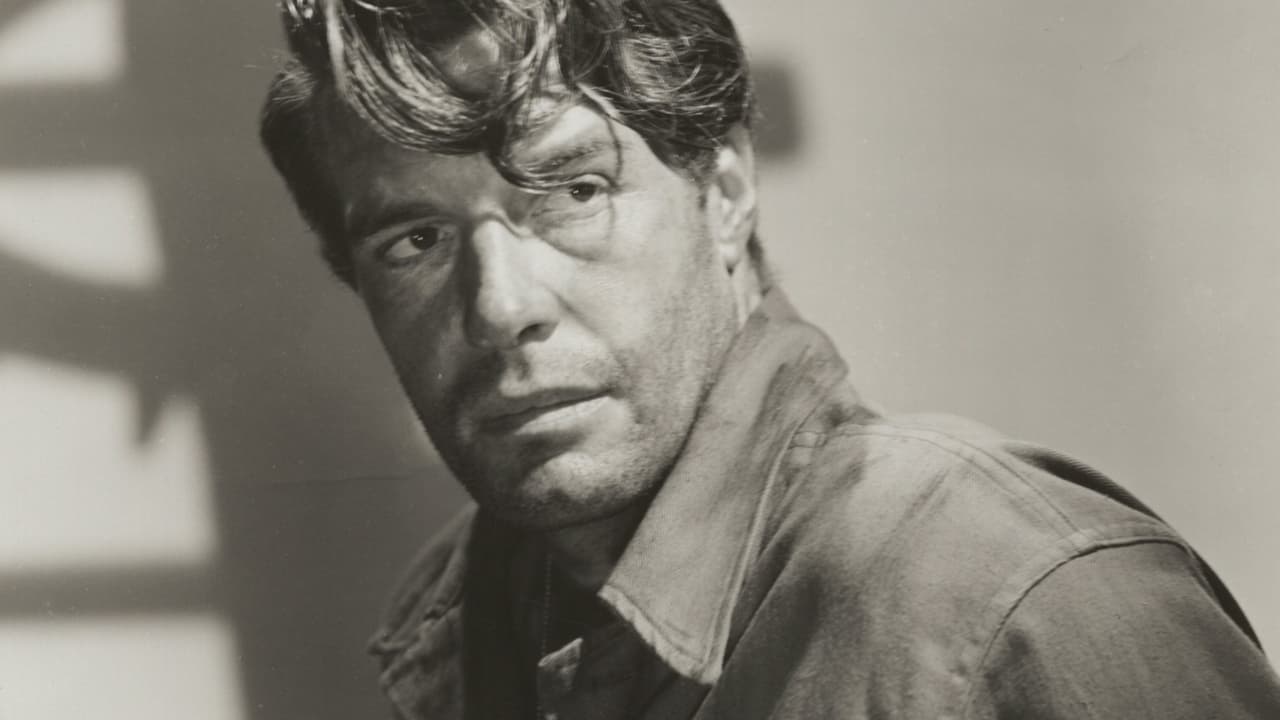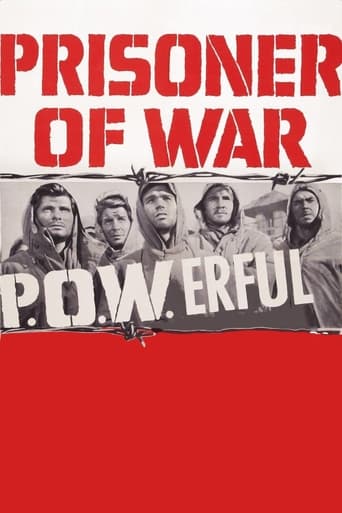



the audience applauded
A different way of telling a story
It isn't all that great, actually. Really cheesy and very predicable of how certain scenes are gonna turn play out. However, I guess that's the charm of it all, because I would consider this one of my guilty pleasures.
View MoreThis story has more twists and turns than a second-rate soap opera.
View MoreThe only big screen film that dealt directly with Ronald Reagan's anti- Communism was this film made post Korean War in 1954. By that time tales of North Korean atrocities were pretty widely known and at least the subject matter of Prisoner of War was generally accepted. As to how well done this film is another matter.It's a bottom billed B picture where Ronald Reagan is given an assignment to actually infiltrate a prisoner of war camp in North Korea to see if the rumors of atrocities are true. His fellow prisoners are cross section of the American GI and as Reagan says they all have a breaking point. Toughest of the lot is Steve Forrest, easiest is Dewey Martin in their hut. Oscar Homolka is a strutting Russian colonel is an 'advisor' to the North Korean commander. No doubt he studied the techniques of Dr. Mengele from the last war and he's experimenting on the men the way Dr. Pavlov did with lab rats. He does find out in an unexpected way just where some people's breaking points are.With some better writing and directing and production values this could have been a classic like that other Prisoner Of War film released by Paramount the year before, Stalag 17. But MGM wasn't too heavily invested in this one as you can plainly tell by watching.
View MoreNot a very good movie but according to the info it's pretty accurate in depicting torture techniques. The purpose of the film was to show the brutality of the NK POW camps and that's done effectively enough, with surprising frankness for the time. Whatever technical flaws exist (and there are plenty) by watching this you'll see a forgotten corner of a forgotten war and some pretty nasty stuff - again, nasty because it's being done north of the DMZ and not in Guantanamo Bay.I don't think any of the Korean veterans brought up his torture when running for office, and if you watch the movies like this one and Pork Chop Hill in comparison to the Vietnam films. I don't know if it was the people in '54 being trapped in the WWII concepts (the boys tend to wisecrack a lot) or the war or what, but it's interesting to see this from the same system that 16 years later would be making movies like "Go Tell The Spartans".
View MoreRonald Reagan and a bunch of US soldiers in a North Korean POW camp. They are tortured... We learn North Korean Communists are bad people... We learn Americans' beards grow very slowly during days of torture...I tried to suppress it, but I finally burst out laughing at this movie. It was the scene when Mr. Reagan comes out from telling the Communists he wants to be on their side. Then, he asks for a bottle of brandy. Next, acting stone-cold sober, he takes a drunken companion, Dewey Martin, to get sulfur to cure Mr. Martin's hangover. Of course, the North Korean communist guard is as dumb as they come. So, the drunk distracts the guard while Reagan goes over to get something from a drawer, which is next to a bunch of empty boxes. I'm sure he boxes were supposed to contain something; but, of course, Reagan causes them to shake enough to reveal they are empty. Ya gotta laugh! I think "Prisoner of War" will appeal mainly to family and friends of those who worked on it - otherwise, it's wasteful. * Prisoner of War (1954) Andrew Marton ~ Ronald Reagan, Steve Forrest, Dewey Martin
View MoreIt's hard to imagine much of a paying audience for this movie which was rushed into production early in 1954 to capitalize on news stories about ill-treatment of American POWs inside North Korea. Many of these stories dealt with the disturbingly high number of POWs who seem to have collaborated with the enemy in various ways and there was ominous talk that something called "brainwashing" might be responsible for this sorry state of affairs. MGM's problem was to work this material into a commercial property which would patriotically support "our boys" while, at the same time, acknowledge those troubling charges of collaboration. The movie tries to solve this dilemma by showing American POWs indeed confessing to "war crimes" but stressing the fact that this occurred only after they'd been subjected to prolonged, unrelenting torture of both a physical and psychological nature. To adequately make its case, the movie presents scenes of torture intended to be persuasive and yet acceptable to a general audience. These scenes probably remained in the viewers' memory long after the movie's more routine and predictable moments had been forgotten. Three scenes in particular stand out. (1) John Lupton, later of TV's "Broken Arrow" series, is shown kneeling with his arms pulled back and over a horizontal pole passing behind him. Heavy rocks are tied to his hands, painfully stressing his wrists, elbows, and shoulders. Each time the pole is lifted and then dropped, Lupton groans in torment. (2) Steve Forrest and a dozen or so other POWs are forced to lie face-up in open graves for several days and nights. They're exposed to the elements, given no food or water, and become increasingly filthy. Eventually they're taken from their graves and lined up before a firing squad for what proves to be a mock execution. (3) Steve Forrest, Robert Horton, later of TV's "Wagon Train," and six other POWs are crucified with ropes to wooden frameworks at the top of a hill and left to suffer long, slow agonies. All these tortures were attested to as being authentic but their impact is somewhat diminished by casting as their victims only young, handsome actors with virile physiques which are shown off by having the actors wearing nothing but dogtags, undershorts, and a gleaming coating of studio sweat. The result is a parade of homoerotic "beefcake in bondage" usually found only in sadomasochistic magazines! In other respects, the movie benefits from MGM's film-making professionalism and there are just enough crowd pleasing moments of dialog and characterization to take the edge off some of the movie's grimness.(May 2010) Revisiting this movie after more than 10 years have passed, one can't help but be struck by its competency as a piece of film-making. We used to take this nuts-and-bolts stuff for granted but compare the big-studio professionalism of "Prisoner of War" with the sloppy work done, especially in the script department, with "The Hanoi Hilton" -- a 1987 film which tells a similar story about the Vietnam War. Both films are failures but at least "Prisoner of War" isn't an embarrassment.
View More